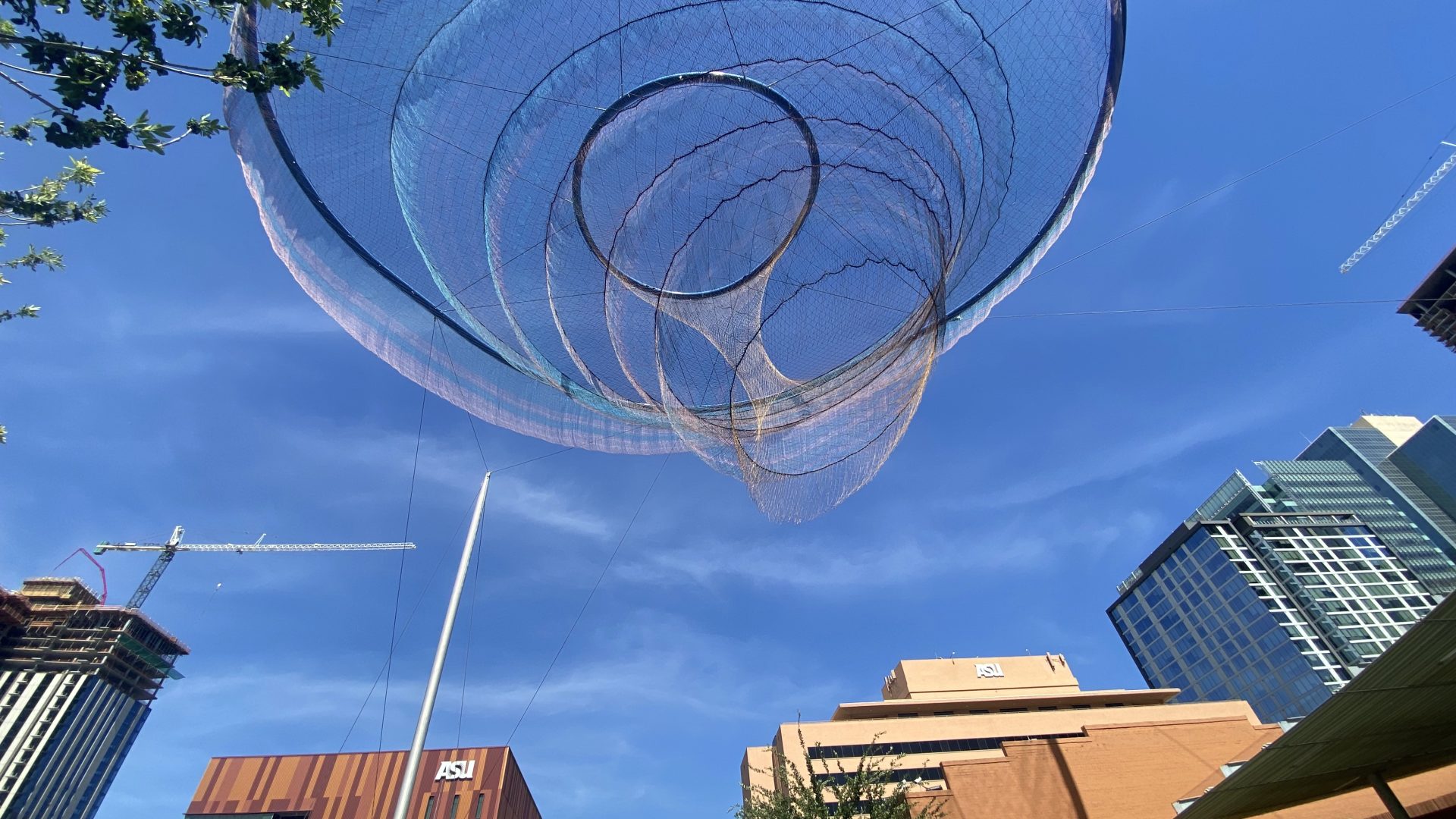During our busy two weeks in Phoenix, we (SUSI scholars from 18 different countries) often discuss what has impressed us most. But even before we arrived, and to this day, I have been struck by the feat of building a state-of-the-art university infrastructure from scratch in such a hot climate.
In Yerevan, Armenia, I run Urbanista.am, a niche media project dedicated to urban development issues. Over the past seven years, our team has implemented and continues to lead many interdisciplinary projects, collaborating with sociologists, architects, economists, anthropologists, and others. This “professional deformation” inevitably colors my perspective whenever I travel. Upon arriving in Phoenix, the symbiotic relationship between the city and Arizona State University’s infrastructure immediately caught my attention. This led me to go deep into ASU’s influence on the city’s development.
Everything started with a breakfast meeting
I am writing this piece from my room at ASU’s downtown residential community. Two towers, 12 stories high, built between 2007 and 2009, were renamed last year from Taylor Place to Gordon Commons in honor of former Phoenix mayor Phil Gordon.
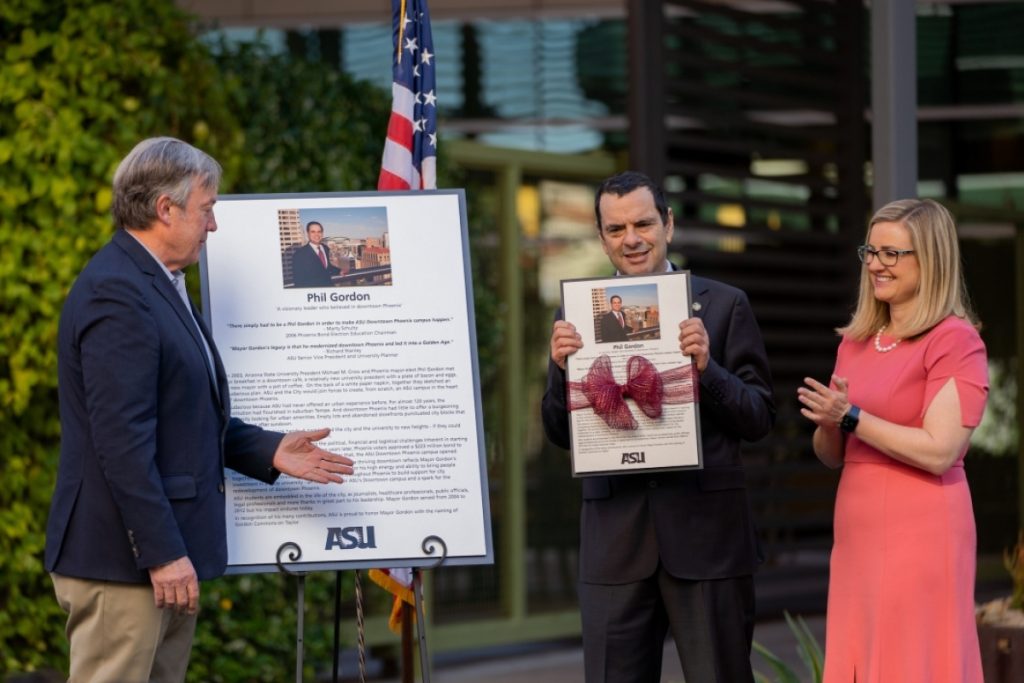
Legend has it that in the early 2000s, Mayor Gordon and ASU President Michael Crow met for breakfast and sketched their vision for the ASU Downtown Phoenix campus on a napkin.
Later, Phil Gordon wrote: “Before ASU came downtown, the commercial city center was largely deserted after 5 p.m. I often said we had the world’s only Starbucks and McDonald’s that closed after lunch and never opened on weekends. But the downtown campus brought a 24/7 life to the fifth-largest city in America. Finally! It’s hard to overstate the enormity of this accomplishment, considering how it all got started.”
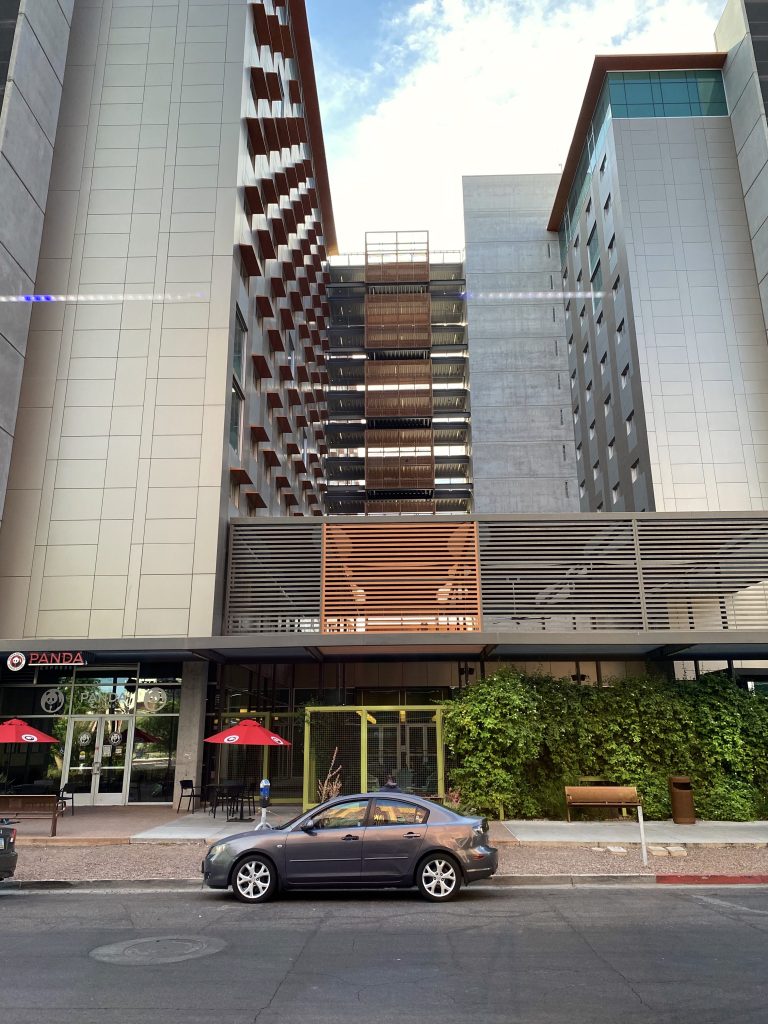
Gordon and Crow, as visionaries, planned to attract a creative class of people who would build a knowledge and technology industry. ASU established this new campus in 2006, relocating several colleges and degree programs into the urban core—a $223 million investment by the City of Phoenix, unprecedented for a public university. Since then, Arizona State University has played a crucial role in community outreach and engagement in Phoenix, notably through its Downtown Phoenix campus and various initiatives.
Reinventing Phoenix
In 2012, the Reinvent Phoenix project—a visionary urban development initiative—was launched with funding from the U.S. Department of Housing and Urban Development. This collaborative effort involved the City of Phoenix, Arizona State University, St. Luke’s Health Initiative, and various community organizations. The project’s goal was to foster sustainable urban development along Phoenix’s light rail corridor. This entailed a multiphase process, beginning with extensive public participation, to develop sustainability visions for five specific transit districts along the light rail line. These visions would then guide the creation of new zoning and form-based codes to facilitate sustainable development in these districts.
And, as if to live up to its name, Phoenix has reinvented itself. Researchers from Arizona State University led the public participation efforts, engaging residents, businesses, and other stakeholders through interviews, workshops, and various events to craft sustainability visions for each of the five transit districts.
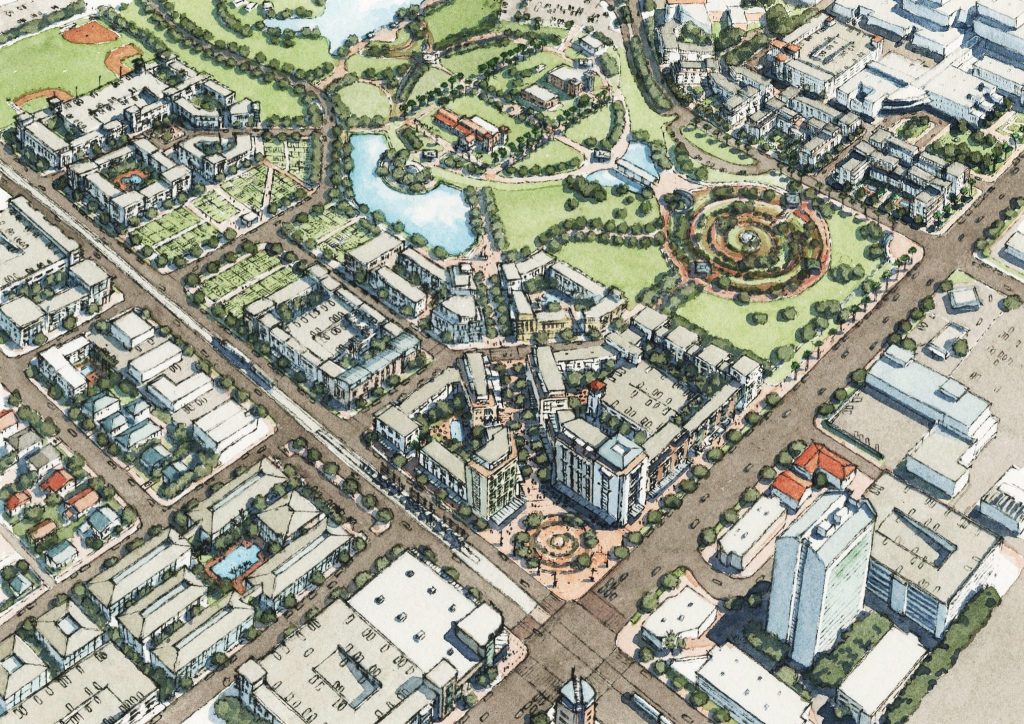
Having the unique opportunity to meet with Phoenix Mayor Kate Gallego alongside our group, I inquired about the influence of ASU on the city. Mayor Gallego highlighted that Phoenix was grappling with development spreading to outlying areas due to the absence of natural land boundaries to limit outward growth. By investing in ASU’s downtown campus, the city catalyzed further growth in its urban core. For a long time, downtown Phoenix lacked essential amenities, such as a grocery store, making it difficult to attract residential density without access to healthy food options.
“I am trying for the city to develop more up versus out, and having Arizona State University here really helped us attract and create the vibrant urban environment that we want to have,” stated Mayor Gallego.
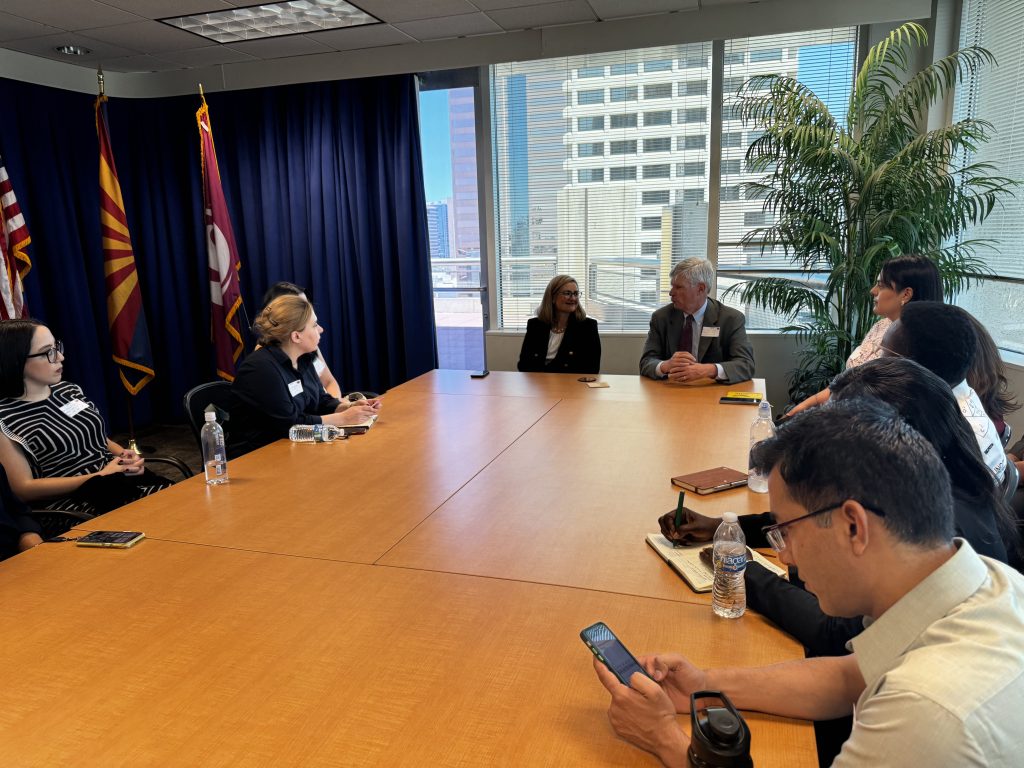
She credited ASU’s presence and the city’s light rail public transit system as pivotal to downtown revitalization, alongside crucial investments in arts, culture, and sports venues. According to Gallego, ASU is instrumental in supporting the local workforce, particularly as major industries like semiconductors—now a primary source of economic growth in the city—rely heavily on the university. She expressed her goal of transitioning Phoenix’s historically real estate-focused economy by leveraging ASU’s presence downtown, thereby creating a more diverse and sustainable economic future.

Today, Phoenix is one of the fastest-growing cities in the U.S. and the largest autonomic vehicle zones, where many technological companies are testing their products. However, history matters as well. Rethinking and preserving architectural heritage is another significant aspect of ASU’s impact on the city. A notable example is the old Post Office, now serving as a Student Center, which received a Historic Preservation Award in 2014.
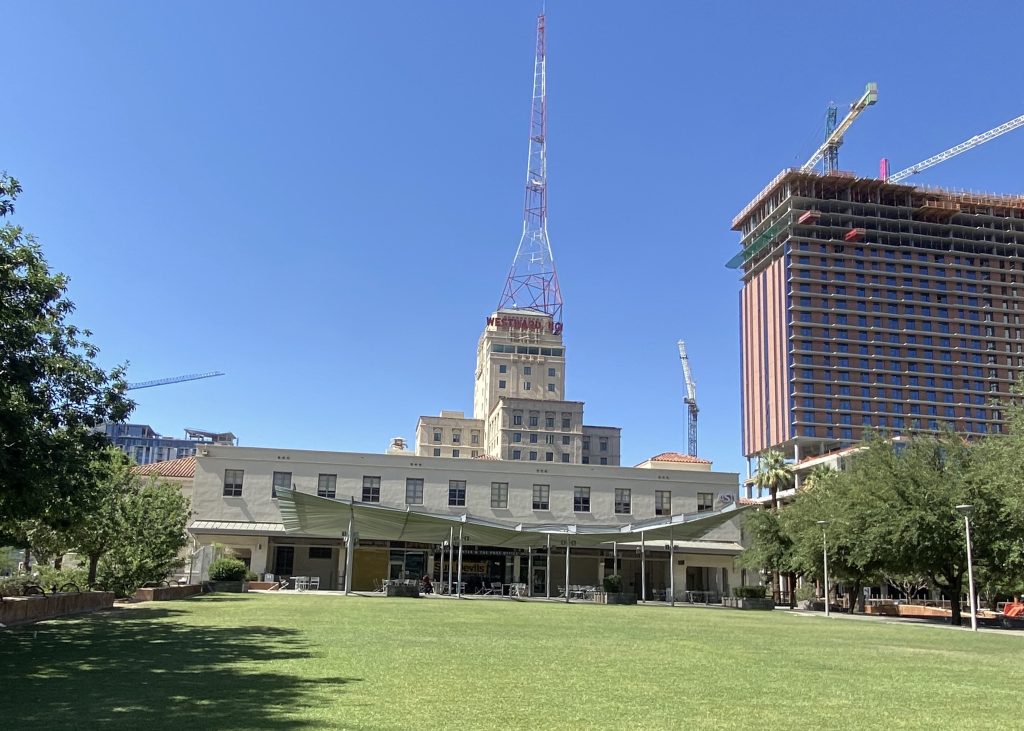
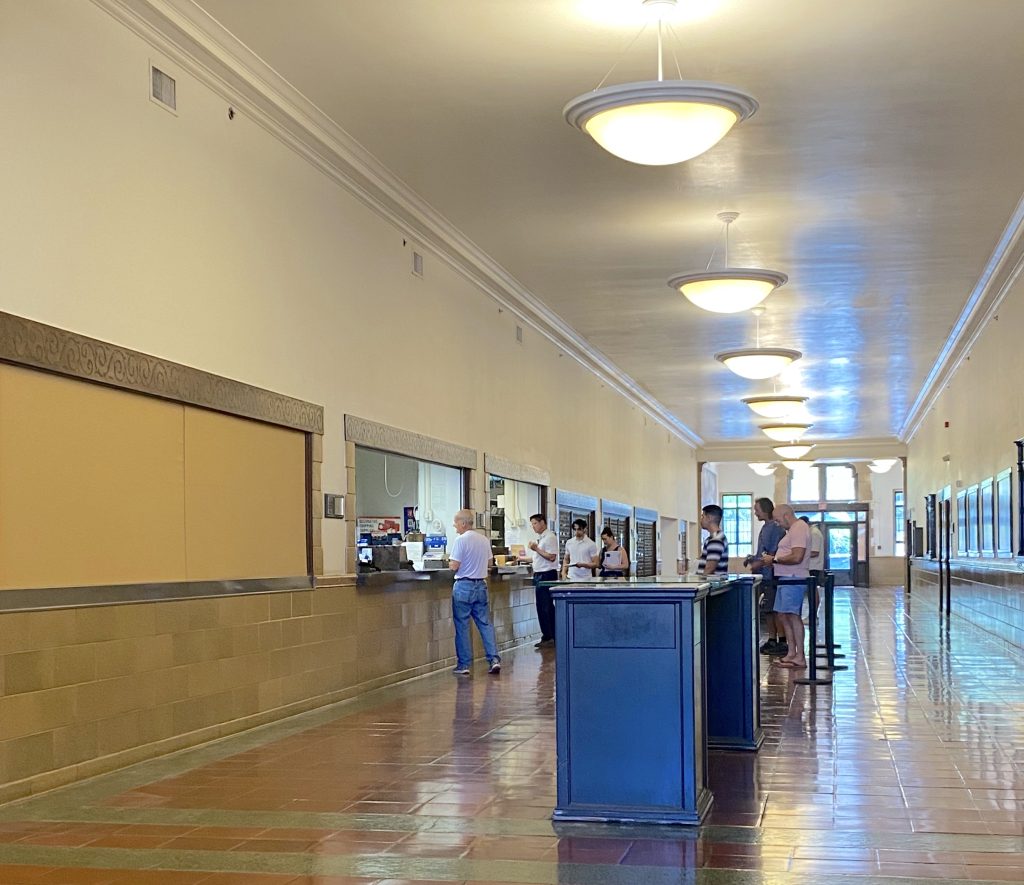
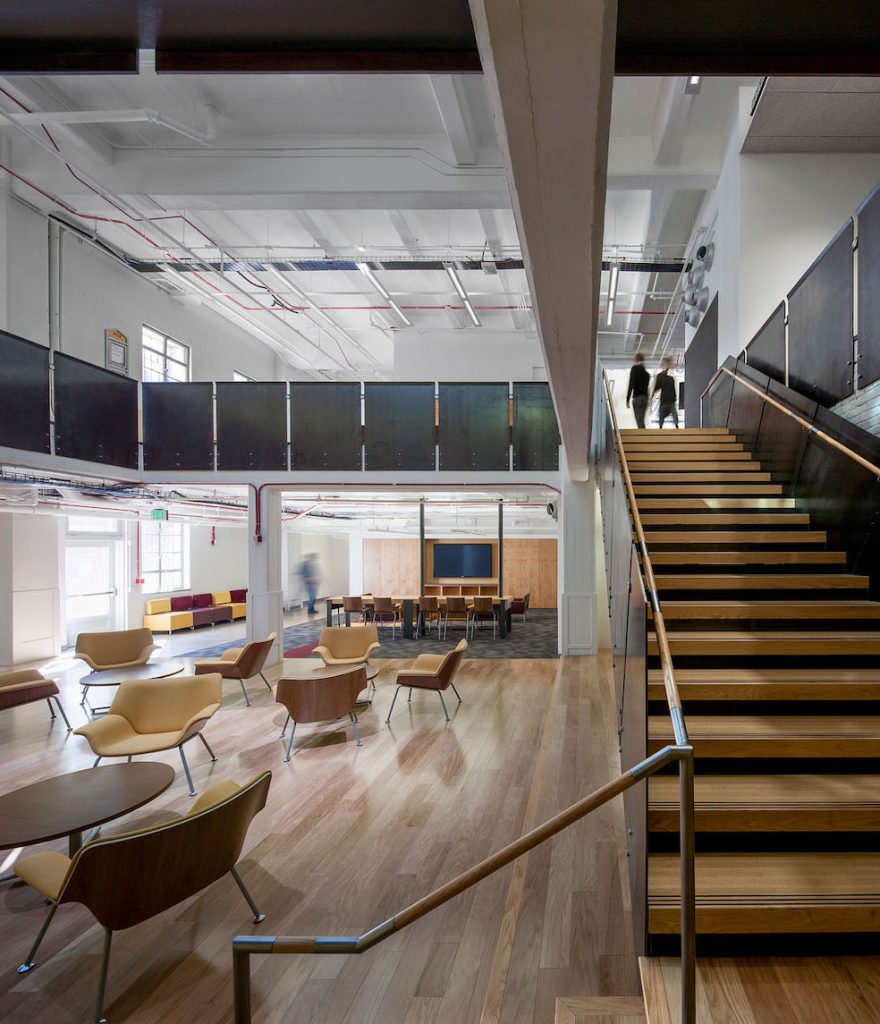
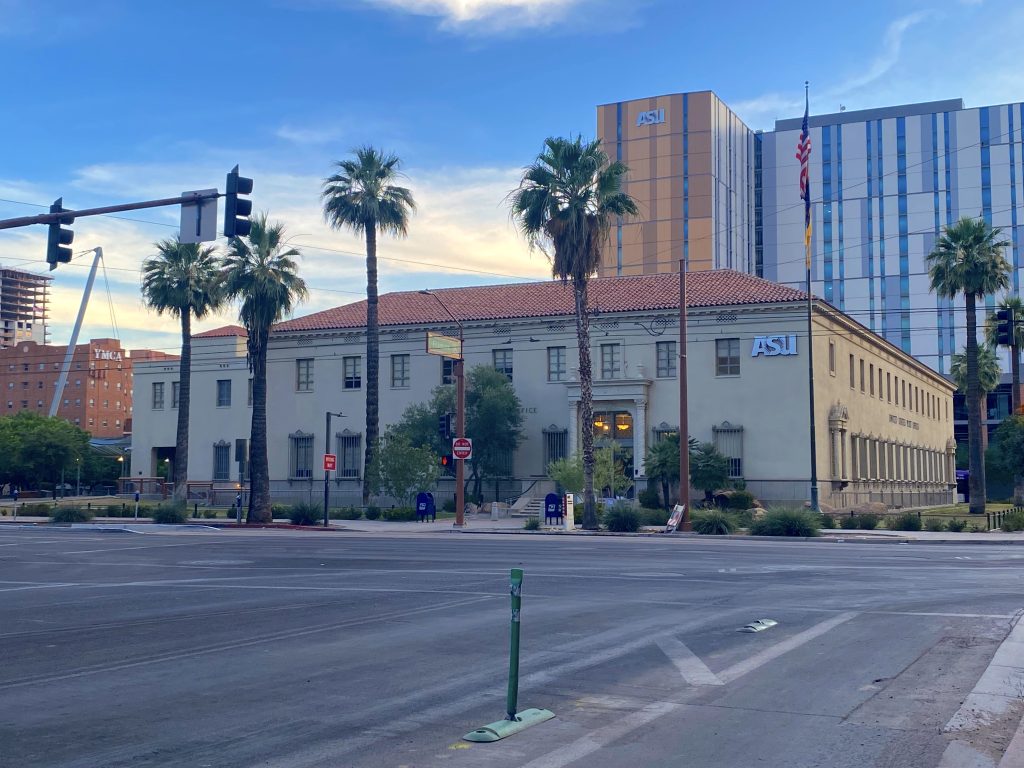
Photo by Gayane Mirzoyan(1,2,4) and ASU (3)
Another is the iconic Westward Ho apartment building, featured in the opening scene of Hitchcock’s “Psycho.” In 2016, Arizona State University’s social and health services program partnered with the building’s current owner. Today, it houses the ASU Community Collaborative, a student-run clinic and community center. This historic building is home to 300 low-income older adults and individuals with disabilities.
Phoenix lessons
My home country Armenia faces a challenge with decentralization, as a third of its population lives in the capital, Yerevan. To ease this strain, the Armenian government proposed the “Academic City” project to modernize higher education and research outside Yerevan.
Initially, the plan aimed to merge about 60 universities into four main clusters in the neighboring city Ashtarak, but later it shifted to building near Yerevan’s suburbs. This ambitious project, costing over $10 billion, has faced criticismfrom scientists for not involving enough stakeholders and focusing more on education than scientific research, as well as not a well-developed strategy.
Globally, there are examples of successful urban developments centered around cultural or educational hubs. Phoenix stands out as a compelling case due to robust engagement from residents, universities, city authorities, and businesses. Despite challenges it still faces, such as climate, homelessness crisis, and real estate inflation, this collaborative effort bolstered by substantial investment positions Phoenix as a valuable model in urban planning.
